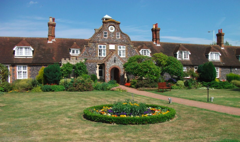
Care Options - Sheltered Housing
What is Sheltered Housing?
Sheltered Housing, also known as Retirement Housing or Warden-Assisted Housing is a term used to describe housing intended specifically for older people. The housing is usually part of a collection or “scheme” of 20 to 40 self contained flats or small bungalows where there is almost always an alarm system for the resident to use in case of emergency. Sheltered housing is usually designed with good levels of heating, and increasingly with doorways wide enough for walking frames and wheelchairs. Traditionally, a warden has lived on site, but this is becoming less common. Often, the scheme manager (warden is a term which is now felt to be out of date) lives off site, or the service is provided as 'floating support', with periodic visits from a member of staff. Some schemes have guest rooms that can be rented out if family or friends want to visit you.
What is the difference between Sheltered Housing and a Retirement Village?
Retirement Villages generally offer opportunities for leasehold properties (owner occupied) and the community areas available will reflect this (shops, gyms, clubs, restaurants etc). Sheltered Housing schemes are generally owned, run and maintained by a housing trust, usually a not-for-profit organisation that works closely with and is part-funded by the local authority. Many schemes have communal areas such as a lounge, laundry and/or garden where tenants can socialize, but tend not to have the same range of facilities which are on offer at a Retirement Village.
How do I get a flat on in Sheltered Housing scheme?
Sheltered Housing to rent is normally provided by local councils or housing associations. The demand for this type of accommodation usually far outweighs the availability, so you should expect waiting lists and selection criteria. People who already own their own home may be viewed as a lower priority than those who do not have the option to buy a flat or who are already tenants in social housing. There is a very small amount of sheltered housing available to rent privately, and although there may not be the same allocation criteria, the private landlords may charge higher rents and may not offer the same protected contracts that housing associations or councils offer.
If you are already a tenant of a council or housing association you should first approach your landlord and ask for a transfer. To apply for council sheltered accommodation, contact your local housing department. To apply for housing association sheltered housing you need either to be referred to a particular housing association by your local council or to approach the housing association yourself to find out about availability. If you have had a care assessment, you can ask your care manager to help with referrals.
Written for yourcarehome - author: Mark Sadler
Related Advice Articles - Care Options
Care Options - Respite Care
If you or your carer feels in need of a break, respite care can be a good option. Respite care is a temporary stay in a ... More
4 April 2013
Care Options - Retirement Villages
What is a Retirement Village? Retirement Villages, also known as retirement communities or care villages are relatively new to the UK but are growing quickly, offering a ... More
4 April 2013
Care Options - Extra Care Housing
What is Extra Care Housing? Extra Care Housing is similar to Sheltered Housing in that is consists of a scheme of flats or small bungalows in one ... More
4 April 2013
Care Options - Living with your Family
If you are needing a higher level of care, or no longer wish to live in your own home, moving in with your family can be ... More
4 April 2013